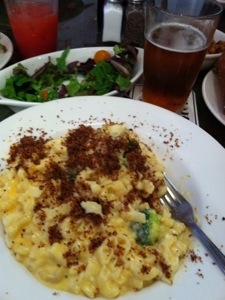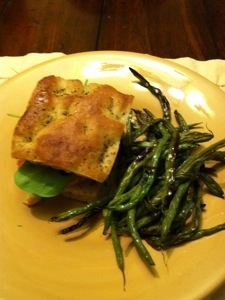I started this blog with an idea that I wanted to think about where the origins of the food I eat. My thinking focused on environmental issues, personal health, and also thinking about knowledge that we need to be effective consumers (this is both an economic issue and a scientific issue). I could write pages and pages about each of these issues, but I want to take a moment and consider another issue that was highlighted for me recently: how food and sustainable agriculture is a cultural issue. I’ve always been frustrated by the multicultural food fairs because to me these are superficial considerations of food in culture. While I listened to speakers at Elon’s Fall Environmental Forum, I came to understand that there is more to sustainable food than just tamales, spring rolls, and dahl. Now I want to think more about this issue in this blog.
Here’s the argument made by multiple speakers, ‘ agriculture is at it’s core culture.’ From their views, it is an etymological, social, and ethical issue.
Etymology
First, the origins of the word refer to cultivation of fields. And culture can be thought of as social mechanisms the cultivate the human enterprise. The point is that growing food – agriculture – etymologically includes culture.
Socially
As we have evolved socially, the word culture has taken on new meaning. But if we think about the food that sustains us, there is a social dimension that shares this new meaning. Growing food is hard, there are many things against the effort to grow food. Blights, pests, climate, weather, and many other natural and man-made factors of life impact growing food. This year our tomatoes have not done well, we think it has to do with the summer weather. But the point is, it brings humility and gratitude when you grow food to know first-hand about the challenges. That definitely cultivates my own life experience.
Moreover, we build culture when we begin to know and speak with the people who grow our food; we begin to build relationships and understand one another. How is this not culture? I always remember when we visited friends in Sweden and following along on trips to the farmer’s market. There was one farmer there who they knew personally and always shopped from him. It was interesting because there was a bond between them. We learned later that at times our friends went to his farm and worked with him. I really believe that this was building the culture of that space and time, and it was important. It makes me want to go back to the market and talk more with the people I buy from.
Ethically
This part gets a little hard, but thinking about the ethics of our culture and how that is reflected in food choices is another issue. I’m reading, with my students, The way we eat (I’ve listed it in Good Reads), but this also came up from the speakers. The issue is this, what does it say about our culture if we are willing to poison the earth from overuse of pesticides and fertilizers in order to have cheap food? OK, this is a big generalization and readers might not like that, but it is an important point to worry about. However, we can also think about the ethics of using petroleum products to make fertilizers, packaging and fuel to transport food when we know that petroleum is a limited resource and one that when used results in environmental degradation. What would this say about our culture? Again, another generalization, but it is hard to not consider the ways that our choices about food reflect something about the ethics of our culture.
Wrapping this up…
I could write more about these issues, challenges, and questions. But my point is to suggest that this blog might be more than I started. I now am thinking about both impacts and reflections of culture that arise as I consider the origins of my meal. Many readers don’t read for my pontificating, so I’ll get back to foods soon. Tonight is stuffed giant marconi peppers from the garden (a different take on that dish) and I’m planning a trip to the market on Wednesday. Maybe I will talk with a farmer about this ask their view on the issue.



